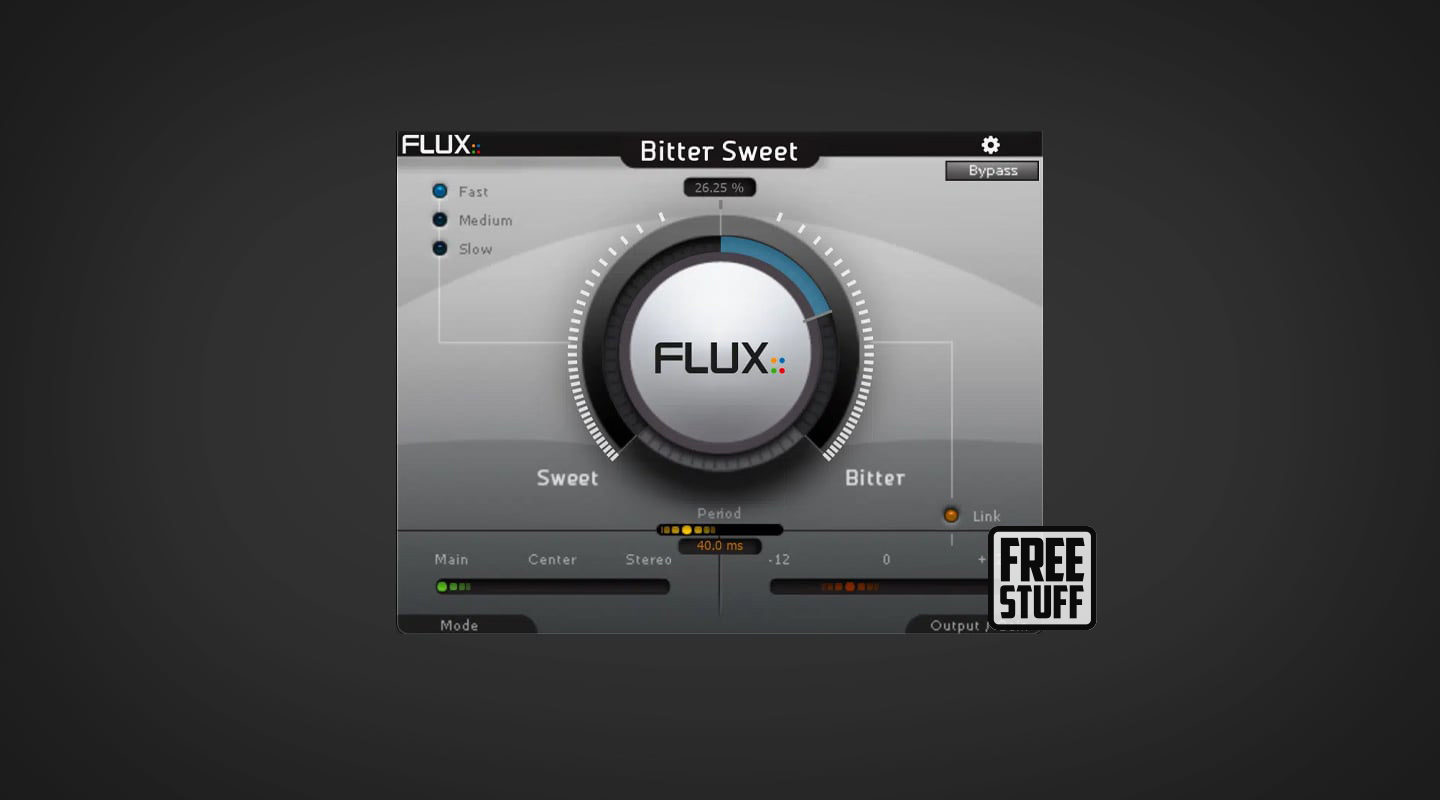
Flux: SE BitterSweet
A free transient design plugin.
During the advent of the DAW in the 1990s — and after being unable to source software appropriate to his needs — Flux Software Engineering took its first tentative steps when French studio engineer Gaël Martinet started learning C++ programming to address a gap in the market. Subcontracting for Merging Technologies over a decade later the concept of FLUX:: SE started to take shape, and since 2006 the company has focused on developing innovative, intuitive audio software tools to assist engineers and producers in the professional audio, broadcast, post-production, and mastering industry the world over.
BitterSweet is Flux’s acclaimed transient processor that offers audio transient management with the simple turn of a knob. Turning the knob to Sweet side reduces the transients which commonly decreases any transient-rich percussive sounds in the mix, while turning the knob to the Bitter side magnifies the transients, increasing transient-rich percussive sounds in the mix.
The Mid (Center) or the Side (Stereo) parts of the sound can be processed independently, using a built in M/S Encoder/Decoder. ‘Main’ processes using regular stereo signal scheme, and is the only available mode for multichannel operations. ‘Center’ engages the internal MS encoder and processes only the Mid channel. After processing, the sound is decoded back to stereo which can be useful for snare/kick drums. ‘Stereo’ engages the internal MS encoder and processes only the Side channel. After processing the sound is decoded back to stereo, which is effective for panned rhythmic instruments.
Features:
- Up to 16 channels Input/Output
- Output Gain. Controls the Output Gain at the end of the processing (-/+ 12 dB)
- Link to Output Gain. Compensates the Output Gain depending on the Transient Amount in order to achieve unity gain
- True bypass control routing the incoming signal direct to the output for a smooth transition between clean and processed signal
- Transient Amount. Adjusts the Bitter/Sweet setting for decreasing or increasing the transients
- Transient Integration. Provides three different modes of transient processing — Fast, Medium & Slow
- Period. For setting the range of the time window used to detect the transients that will be processed
- Three different Operation Modes (Main, Center, Stereo) offering versatile transient processing
- Open Sound Control Support
















RESPONSES